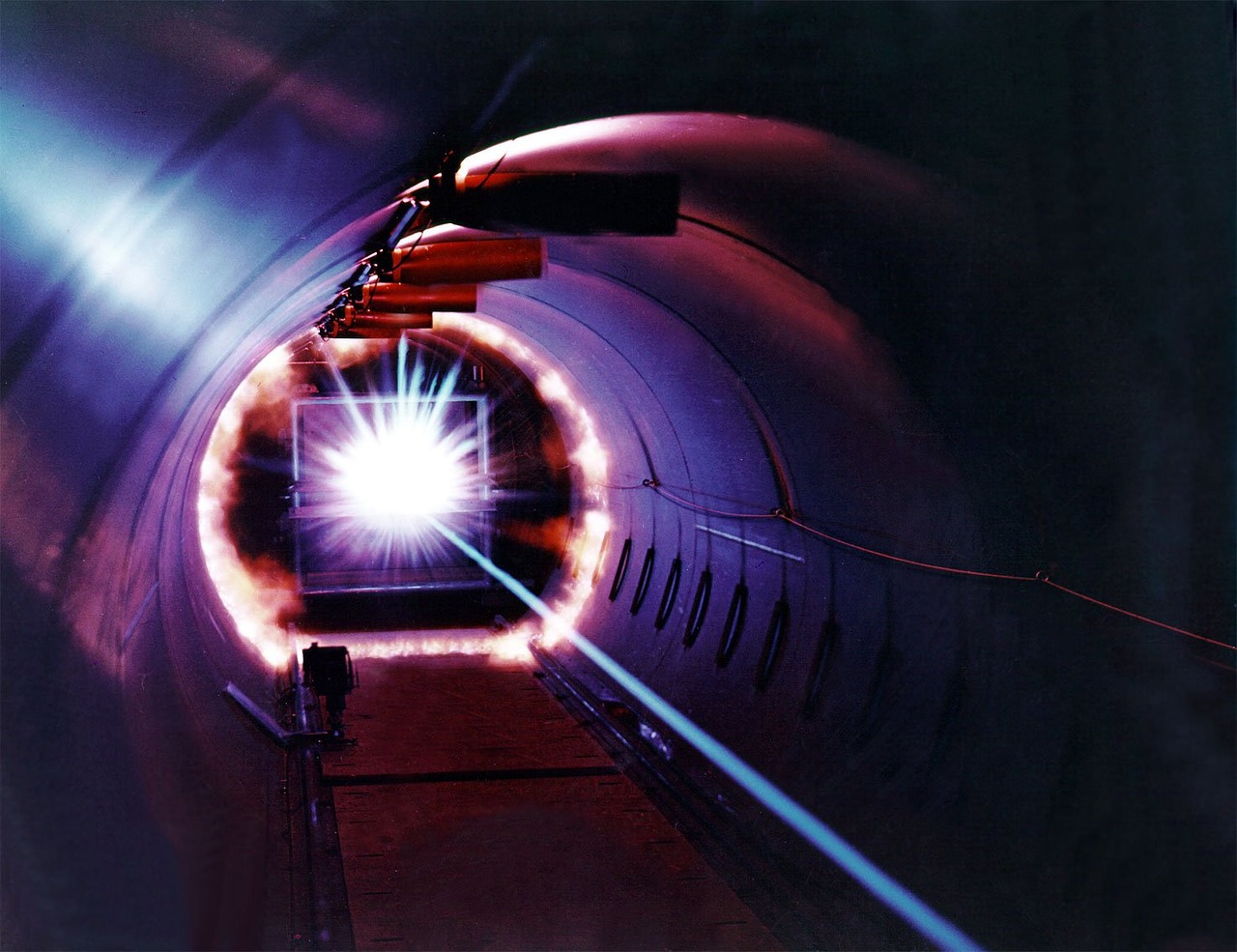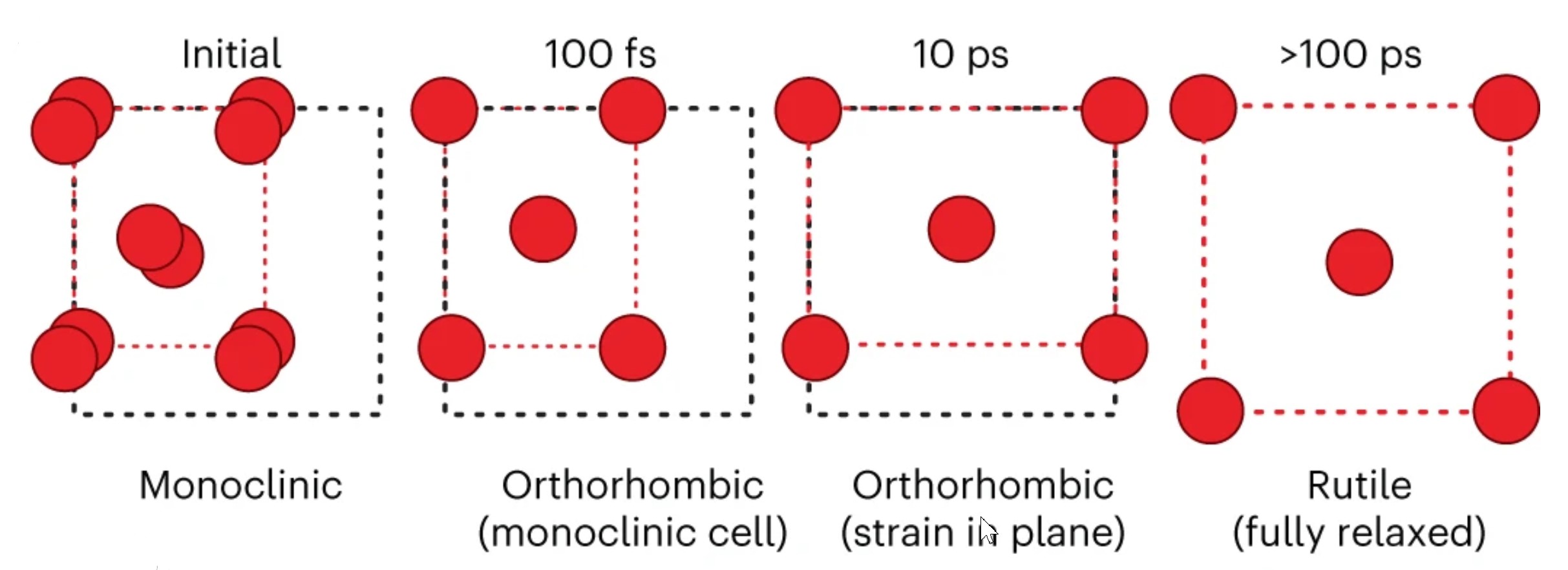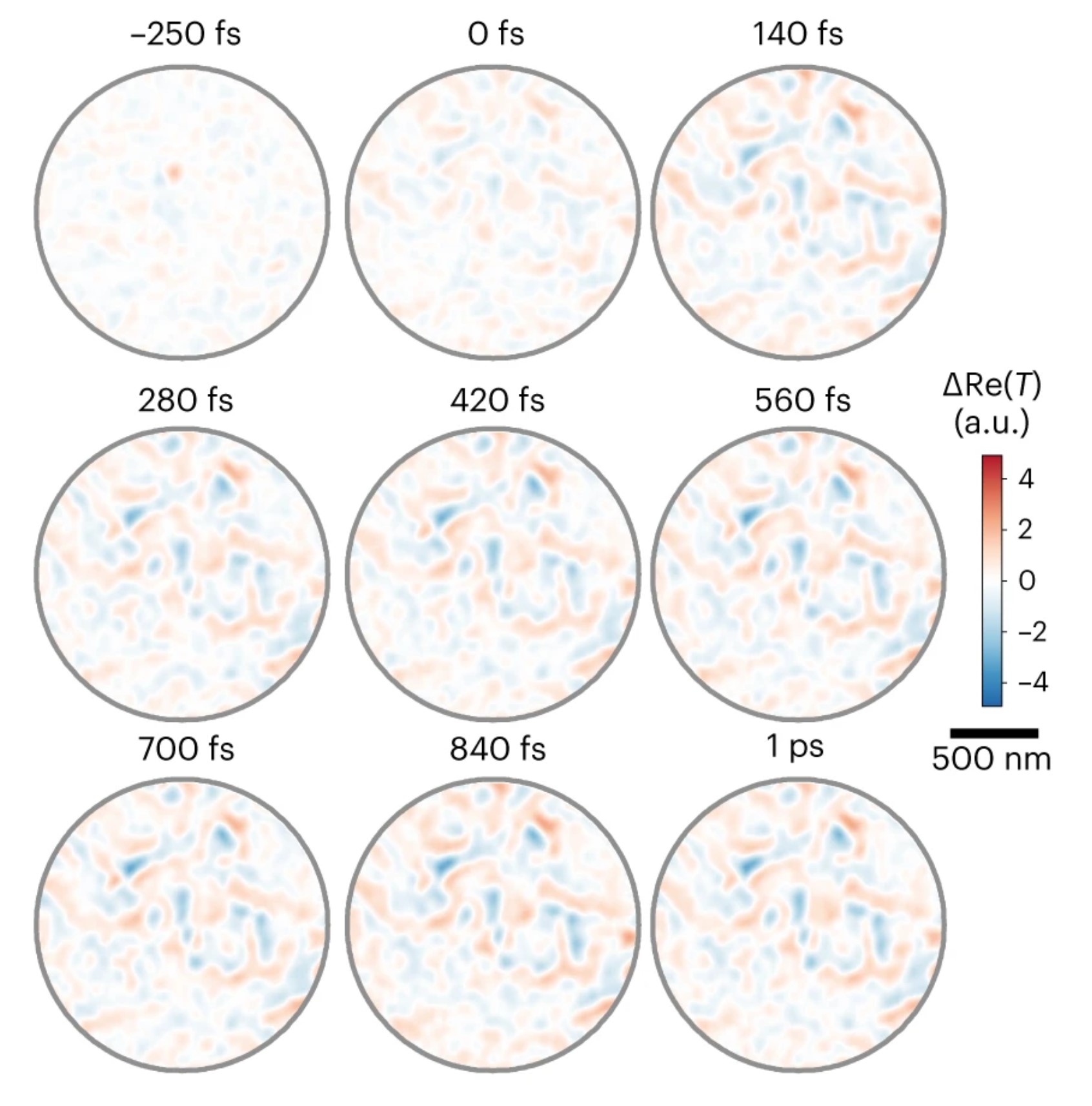Smaller, faster, more complex? Watching a phase transition with X-ray eyes
18.09.2023
 |
|
Credit: Pixabay. |
Vapor condensing on your mirror after a shower, molten iron cooling into solid bars, and diamonds forming under intense pressure – these are all examples of phase transitions, when a material transforms from one state to another. But while phase transitions are defined by their “macroscopic” nature, they always begin with a rapid nanoscale jump from one phase to the other to kickstart the process. As a key part of making materials, understanding and manipulating phase transitions is a key aspect of materials science and underlies the modern economy, so observing this initial switch has been a long sought-after goal.
 In recent years, using light to trigger phase transitions has become popular. By providing a precise “starting gun” for the transition, we can track how they proceed in real time. Even more excitingly, it was quickly realized that, inside complex “quantum” materials (where the interactions between different electrons, nuclei and spins are key), ultrafast laser pulses can create entirely new phases. But this ability to track transitions over the course of a millionth of a billionth of a second came at a price – losing the spatial resolution needed to see the nanoscale regions that switch and start the whole process. This is a major problem, as the so-called “phase co-existence” at the nanoscale can dictate how a system transforms, and even help stabilize normally unstable phases.
In recent years, using light to trigger phase transitions has become popular. By providing a precise “starting gun” for the transition, we can track how they proceed in real time. Even more excitingly, it was quickly realized that, inside complex “quantum” materials (where the interactions between different electrons, nuclei and spins are key), ultrafast laser pulses can create entirely new phases. But this ability to track transitions over the course of a millionth of a billionth of a second came at a price – losing the spatial resolution needed to see the nanoscale regions that switch and start the whole process. This is a major problem, as the so-called “phase co-existence” at the nanoscale can dictate how a system transforms, and even help stabilize normally unstable phases.
Combining such extreme time and space resolution rules out using conventional methods, so we turned to an emerging technology – X-ray free electron lasers (XFELs), huge machines hundreds of meters long capable of producing ultrafast X-ray pulses. X-rays are well known for their ability to see small objects, but the optics used in conventional X-ray microscopes are complex, expensive, and need to be so close to the sample that our laser pulses would damage them. Instead, we combined XFELs with another new technology, coherent diffractive imaging (CDI). Instead of using a lens to gather light and create an image, we directly capture the scattered light from the sample. Then, we replace the lens with advanced algorithms on a computer, inverting the scattering pattern to give back an image with nanometer resolution. A few years ago, we showed that CDI could take pictures of static phase-coexistence, so with these two key pieces in place we were ready to try for movies!
“The bigger story is that we now have the tools to really go looking for the ultrafast and nanoscale beginnings of phase transitions”.
We decided to start by imaging the quantum material vanadium dioxide (VO2). VO2 famously undergoes a solid-to-solid phase transition from an insulator to a metal when heated above 60°C. Yet, what makes VO2 particularly interesting are claims it has a special second light-induced phase – but only for small regions at the nanoscale, and only for billionths of a second. So, when we shot our VO2 and started getting video back, we expected to see the insulating regions start to switch into small patches of both normal metal and special second phase, which would then grow until the whole sample was transformed. What we saw instead was both surprising but also simple: instead of a mosaic of three phases, the entire sample switched to the normal metal in the first frame!
 From there we saw slower changes too, like those previously thought to come from phase growth or the special second phase, but these changes were completely uniform, without any nanoscale pattern. This left us scratching our heads at first, but we soon realized it was related to a fact we often ignore when studying ultrafast phase transitions – volume expansion. When VO2 goes from insulator to metal, its crystal structure and volume also change. This change in volume takes time, roughly a thousand times longer than the switch, so when we trigger the system with light it’s actually extremely compressed at first, as if it were buried under a hundred kilometers of rock. Without the ability to see at the nanoscale, this volume expansion can easily be confused with more complicated, spatially dependent phase dynamics.
From there we saw slower changes too, like those previously thought to come from phase growth or the special second phase, but these changes were completely uniform, without any nanoscale pattern. This left us scratching our heads at first, but we soon realized it was related to a fact we often ignore when studying ultrafast phase transitions – volume expansion. When VO2 goes from insulator to metal, its crystal structure and volume also change. This change in volume takes time, roughly a thousand times longer than the switch, so when we trigger the system with light it’s actually extremely compressed at first, as if it were buried under a hundred kilometers of rock. Without the ability to see at the nanoscale, this volume expansion can easily be confused with more complicated, spatially dependent phase dynamics.
Because almost all transitions come with a change in volume, we expect this to be important in other light-induced phase transitions. But the bigger story is that we now have the tools to really go looking for the ultrafast and nanoscale beginnings of phase transitions, and the hunt is now on for the complex nanoscale dynamics that we know must be out there. Coherent imaging with XFELs will also have applications outside just studying phase transitions – looking at catalysis, nanomedicine delivery, and plasmonics are just a few places we’re hoping to look next.
Reference:
Johnson, A.S., Perez-Salinas, D., Siddiqui, K.M. et al. Ultrafast X-ray imaging of the light-induced phase transition in VO2. Nat. Phys. 19, 215–220 (2023). https://doi.org/10.1038/s41567-022-01848-w
Contact
Dr. Allan Johnson
'Ultrafast Science of Quantum Materials' Group
allan.johnson[at]imdea.org
Group webpage: https://nanociencia.imdea.org/ultrafast-science-of-quantum-materials/home
Communication and Dissemination Office at IMDEA Nanociencia
divulgacion.nanociencia [at]imdea.org
Twitter: @imdea_nano
Facebook: @imdeananociencia
Instagram: @imdeananociencia
Source: https://www.thesciencebreaker.org/breaks/maths-physics-chemistry/smaller-faster-more-complex-watching-a-phase-transition-with-x-ray-eyes




